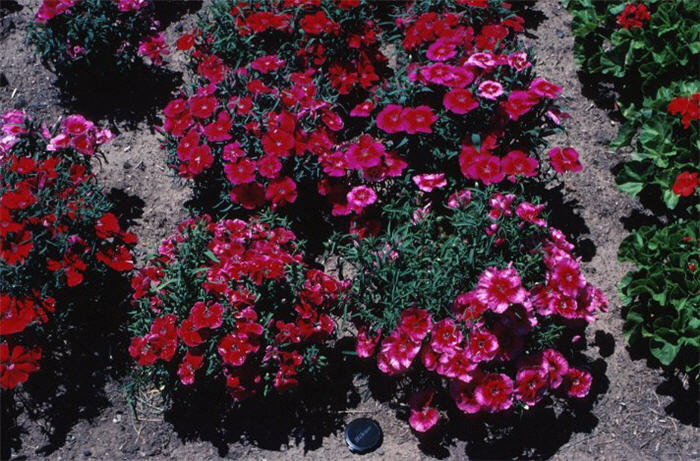| Botanical Name: Dianthus barbatus | |
| Common Name: Sweet William |

-
Anatomy
-
Culture
-
Design
Plant Type
Annual, Biennial
Height Range
Under 1'
Flower Color
Pink, Purple, Red, White, Multi-Colored
Flower Season
Spring, Summer
Leaf Color
Green
Bark Color
n/a
Fruit Color
n/a
Fruit Season
n/a
Sun
Full, Half
Water
Medium, Extra in Summer
Growth Rate
Moderate
Soil Type
Sandy, Clay, Loam
Soil Condition
Average, Rich, Well-drained, Moist
Soil pH
Acid, Neutral
Adverse Factors
n/a
Design Styles
English Cottage, Formal
Accenting Features
Fragrance, Showy Flowers
Seasonal Interest
Spring, Summer
Location Uses
Entry, Perennial Border, Patio
Special Uses
Container, Cut Flowers, Small Spaces
Attracts Wildlife
Hummingbirds, Butterflies
Information by: Stephanie Duer
Photographer: JJ Neilson, Modesto JC
Photographer: JJ Neilson, Modesto JC
-
Description
-
Notes
Sweet William is a short-lived tender perennial or biennual usually grown as an annual. Its blossoms are clusters of flat, disc-like flowers in shades of red, pink, white, and any combination thereof. Plants are usually dense and mounded, with deep green foliage. Flowering from May to frost, they slow down a bit in the heat of the summer. Their fragrant flowers are enjoyed by butterflies and hummingbirds.
Grow in rich, well amended soil that is well drained. Plant in full sun to light shade. Though they may reseed, hybrids will not seed true to form.